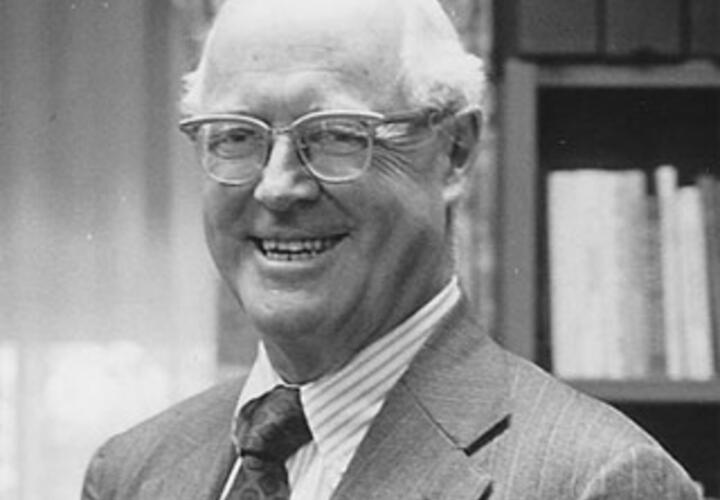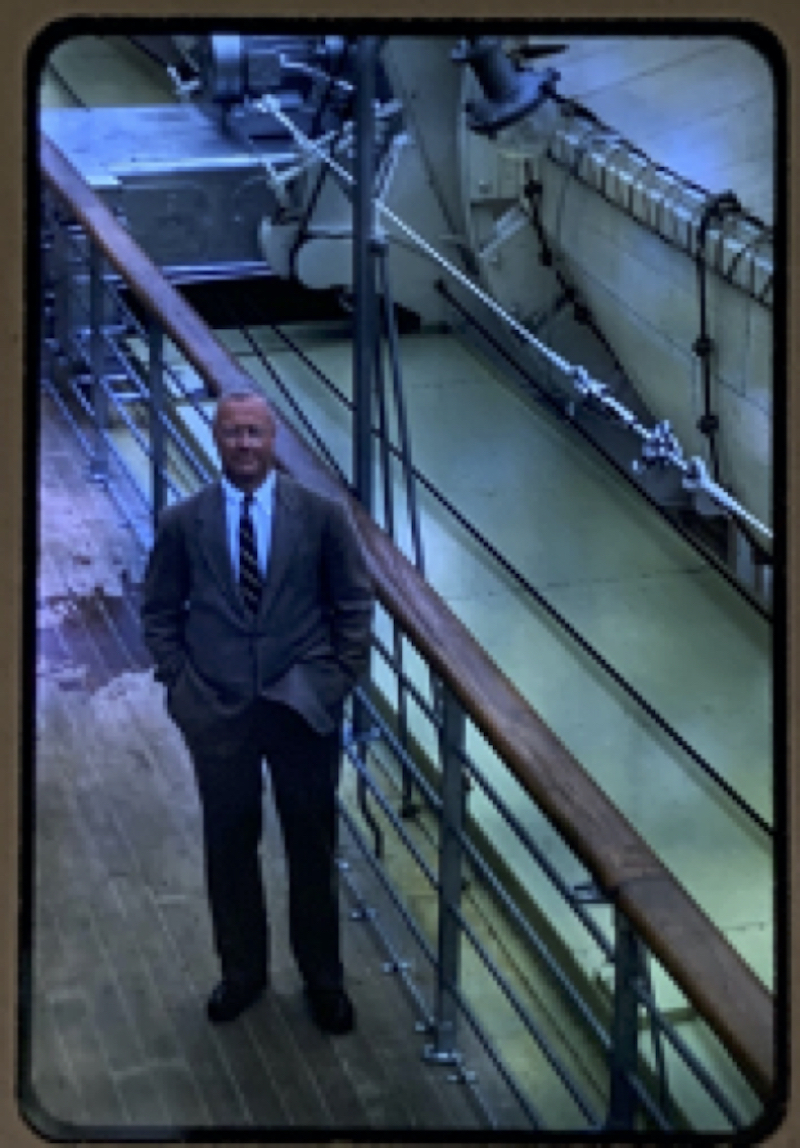Lloyd Reynolds and the founding of the Economic Growth Center
At a time when few American economists were studying international development, the chair of Yale Department of Economics sought to understand economies by examining them up-close.

Lloyd Reynolds, EGC, and the development of Development Economics
During its first decade, the Economic Growth Center commissioned some of the earliest quantitative studies on the economies of developing nations, trained a generation of young economists who went on to become prominent development specialists, and hosted international researchers from developing countries. With guidance from Founding Director Lloyd Reynolds and the influential economist Simon Kuznets, the group robustly debated the role of development and the interaction of research and policy in a university setting.
“When the Growth Center first started, development was new to economics – we had never really looked at the growth process in developing countries,” Hugh Patrick, professor emeritus at Columbia Business School and part of the EGC’s founding team, said. “The Center had two key contributions: applying measurement of GDP and production to developing countries for the first time and hiring young economists who went out and taught all over the United States and Canada and became major figures in the development field.”

Lloyd Reynolds (far left) and other EGC affiliates meet in a workshop seminar of the Country Studies Program in 1962.
Early days of the EGC
In the aftermath of World War II and in the midst of the Cold War, an increased focus on the economies of poorer nations led to the formalization of economic development as an area of analysis. The Ford Foundation, which saw poverty as a potential instigator of conflict, was particularly interested in the topic. In the early 1950s, the Foundation asked Lloyd Reynolds, then the economics department chair at Yale, to travel to Africa to study the economic impact of decolonization. His daughter, Priscilla Roosevelt, called this trip a “turning point” in her father’s life because it inspired him to switch his focus from labor to development economics.

Lloyd Reynolds in 1955, aboard a ship to Europe. Photo courtesy Anne Skinner.
Reynolds’ first development economics research examined wages and productivity in Puerto Rican factories. Through interviews with more than a thousand workers and field investigation of 85 factories, he found that worker and firm behaviors were remarkably similar to those in more industrialized nations, challenging numerous myths about low-income economies. In 1955, to encourage universities to expand their development programs, Reynolds took a yearlong leave of absence to work at the Foundation as its Director of Economic Development and Administration. During his time at the Foundation, the idea of the Economic Growth Center began to take hold.
Simon Kuznets, the Harvard economist and later Nobel laureate, frequented the Ford Foundation’s offices in New York, where he expounded the idea of a center that would focus on the comparative study of national economies. At the time, there was minimal statistical information available about developing economies, which limited research. Kuznets’ idea was to create a center that would gather this data and enable comparison across countries and stages of growth. After Reynolds left the Ford Foundation, he teamed up with Kuznets and a few other Yale professors to lobby Ford to fund the center.
“A side-benefit of my years at Ford was to remove any inhibitions I might have had about asking for large sums of money,” Reynolds later wrote. He added that another reason to found the Center was to increase the resources for applied economics within the department, which had drifted towards theory in the 1950s.
The highlight of the Center was getting together for coffee in the morning and the afternoon and just arguing with each other about development and the development process – Hugh Patrick
In 1961, a ten-year, two-million-dollar grant for the “Center for Quantitative Study of Economic Structure and Growth” was approved. The center was to be based at Yale with Reynolds as its director.
The Center originally had four goals: improving techniques for economic measurement, training foreign government economists, collecting economic data, and researching economic growth and structure across countries. Early on, its name was shortened to the Economic Growth Center and the scope of its work was narrowed to focus on developing countries.
Country Studies, an early exploration of development economics
The flagship program of the Economic Growth Center’s first ten years was the Country Studies Program. Every year, two to six exceptional young economists were recruited to join Yale as assistant professors. Each professor was tasked with traveling to one developing country and understanding its economy, from both a theoretical and statistical view point. Afterwards, the professors returned to New Haven and wrote a book on their findings. For many of the countries, these were the first book-length studies of their economies that emphasized data-driven insights and were widely used by both development researchers and scholars generally interested in the country.
“Each fall, I beat the path to MIT, Harvard, Princeton, Chicago and Berkeley, seeking prospective PhDs who might be willing to join our enterprise,” Lloyd Reynolds wrote. “A high proportion of top development economists in the next generation served their apprenticeship at Yale.”
Hugh Patrick said that the Country Studies participants contributed to a vibrant intellectual atmosphere: “The highlight of the Center was getting together for coffee in the morning and the afternoon and just arguing with each other about development and the development process, bringing to bear your own country’s experience.”
Legacy of Country Studies and the continuation of the EGC
After the Country Studies Program ended in 1971, the increased interest in development economics research and the popularity of the field among students gave the Center momentum to continue. EGC received two additional grants from Ford and eventually established its own endowment. Its focus transitioned from gathering data and studying the structure of economies to applied microeconomics, with focuses on agriculture, labor markets and population dynamics.
Today, the EGC’s more than thirty faculty affiliates engage in research ranging from children’s cognitive development to the effects of cross-border trade on poverty, to the impact of Covid-19 vulnerable populations. As the Center celebrates its 60th anniversary in 2021, it is interested in honoring the contributions of its founders.
Lisa Qian is a 2020 economics graduate of Yale College, and a former intern at the Economic Growth Center.